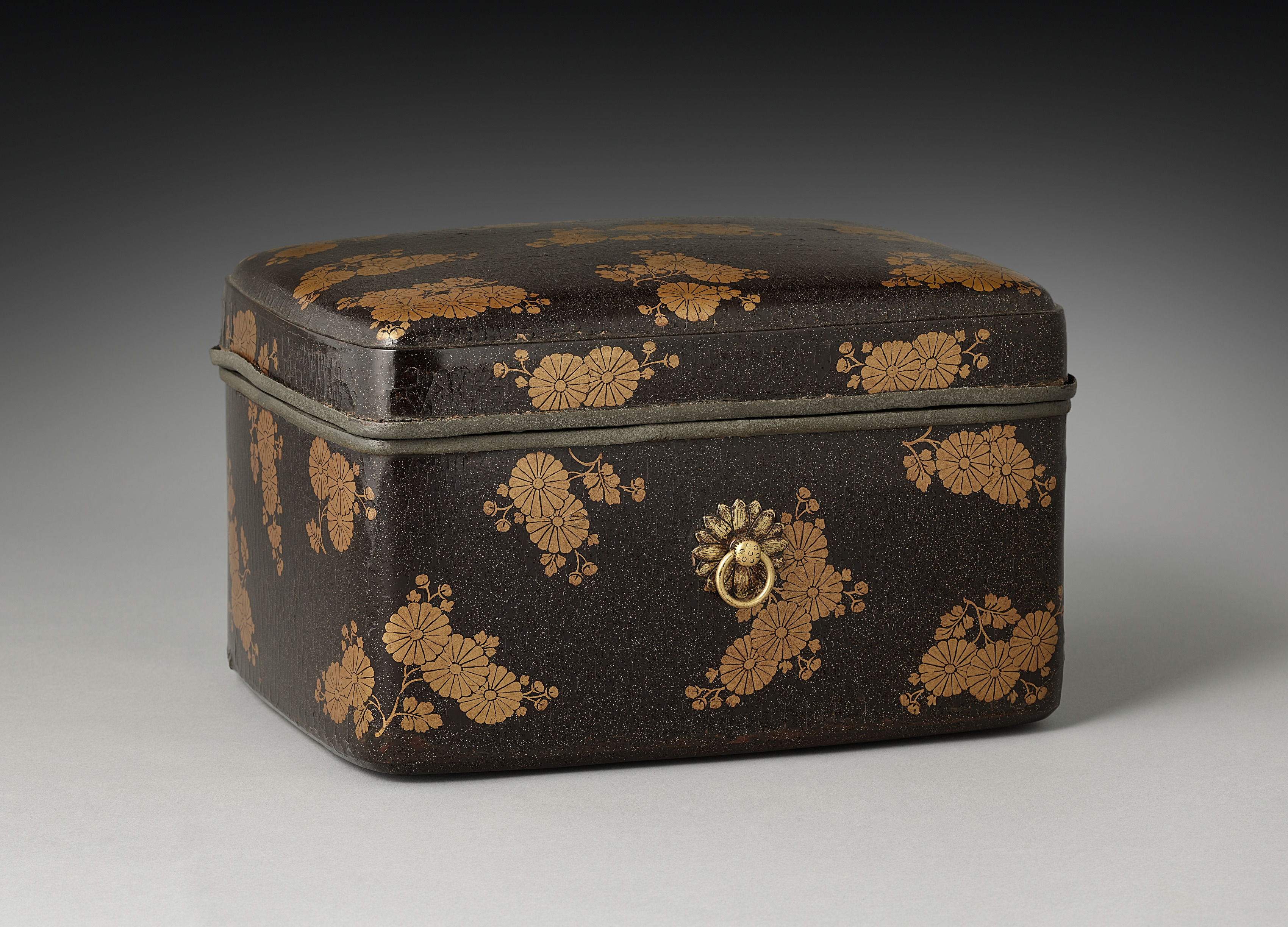The Cleveland Museum of Art
Collection Online as of April 20, 2024

Cosmetics Box with Chrysanthemums
early 1300s
Location: not on view
Did You Know?
In Japanese, this type of small box is called a tebako, literally a hand box, and was typically part of a cosmetics set.Description
In China, the chrysanthemum was historically appreciated for its association with the Double Nine Festival and the reclusive life of the poet Tao Yuanming (AD 365-427). In Japan, the 16-petaled chrysanthemum came to symbolize the Japanese imperial family after Emperor Gotoba (1180-1239) chose the motif as his personal emblem, having it applied to his sword and everyday utensils. This box proves that the flower also appeared on lacquer wares as early as the Kamakura period.- ?–1963(Inosuke Setsu 濑津伊之助 [1897–1969], Tokyo, Japan, sold to the Cleveland Museum of Art)1963–The Cleveland Museum of Art, Cleveland, OH
- “Oriental Art Recently Acquired by American Museums, 1963.” Archives of the Chinese Art Society of America 18 (1964): 69–91. Mentioned and Reproduced: p. 71, fig. 15 www.jstor.orgLee, Sherman E. “Year in Review for 1963.” The Bulletin of the Cleveland Museum of Art 50, no. 10 (December 1963): 263–294. Mentioned: no. 65, p. 292; Reproduced: no. 65, p. 284 www.jstor.orgThe Cleveland Museum of Art. Handbook of the Cleveland Museum of Art/1966. Cleveland, OH: The Cleveland Museum of Art, 1966. Reproduced: p. 275 archive.orgMayuyama, Junkichi 繭山順吉. Japanese Art in the West. [Tokyo]: Mayuyama & Co, 1966.The Cleveland Museum of Art. Handbook of the Cleveland Museum of Art/1969. Cleveland, OH: The Cleveland Museum of Art, 1969. Reproduced: p. 275 archive.orgThe Cleveland Museum of Art. Handbook of the Cleveland Museum of Art/1978. Cleveland, OH: The Cleveland Museum of Art, 1978. Reproduced: p. 371 archive.orgYamane, Yūzō 山根有三, Shūjirō Shimada 島田修二郎, and Terukazu Akiyama 秋山光和. Zaigai Nihon no shihō [在外日本の至宝 = Japanese Art: Selections from Western Collections, vol. 10]. Tōkyō: Mainichi Shinbunsha, 1979. vol. 10, no 2. 3-4, p. 109Lee, Sherman E., Michael R. Cunningham, and Ursula Korneitchouk. One Thousand Years of Japanese Art (650-1650): From the Cleveland Museum of Art: Catalogue. New York: Japan Society, 1981. Mentioned and reproduced: p. 39, no. 18Shimizu, Christine. Les laques du Japon: urushi. Paris: Flammarion, 1988. p. 122Grossman, Nancy, James T. Ulak, Marjorie Williams, and Laurence Channing. Art of Japan: Masterpieces from the Cleveland Museum of Art. Cleveland, OH: The Cleveland Museum of Art, 2005.Sŏn, Sŭng-hye. The Lure of Painted Poetry: Japanese and Korean Art. Cleveland, OH: Cleveland Museum of Art, 2011. cat. no. 40
- The Lure of Painted Poetry: Cross-cultural Text and Image in Korean and Japanese Art. The Cleveland Museum of Art, Cleveland, OH (organizer) (April 15-August 21, 2011).One Thousand Years of Japanese Art (650-1650) from The Cleveland Museum of Art. Japan House Gallery, New York, NY (March 19-May 17, 1981).Year in Review (1963). The Cleveland Museum of Art, Cleveland, OH (organizer) (November 27, 1963-January 5, 1964).
- {{cite web|title=Cosmetics Box with Chrysanthemums|url=false|author=|year=early 1300s|access-date=20 April 2024|publisher=Cleveland Museum of Art}}
Source URL:
https://www.clevelandart.org/art/1963.513